Module 9: Art and Illusion in Early Renaissance Europe
1/32
There's no tags or description
Looks like no tags are added yet.
Name | Mastery | Learn | Test | Matching | Spaced |
|---|
No study sessions yet.
33 Terms
Altarpiece
(Also known as a retable). A work of painting or sculpture placed on, above or behind the altar in a Christian church
Triptych
A picture made up of three panels. The outer panels are often hinged so they fold over the center panel like doors.
Polyptych
A painting or other work consisting of four or more separate panels that are hinged or held together in a framework. Most polyptychs functioned as altarpieces.
Glazing
Is a technique in oil painting in which thin, translucent layers of paint (glazes) are used to build depth of color in the painted surface.
Illusionism
A painting technique that creates the illusion of three-dimensionality and depth on a flat surface, often through linear perspective and realistic detail.
Trompe l’oeil
(French: “fool the eye”). A style of painting that imitates reality so closely that it might momentarily fool a viewer into thinking a painted object or scene is real
Atmospheric perspective
(Also known as aerial perspective). A technique for creating the illusion of depth in a two-dimensional picture by gradually decreasing color intensity, contrast, and texture in apparently distinct colors
One-point linear perspective
A mathematical system used in drawing to create the illusion of depth, where all parallel lines converge at a single vanishing point on the horizon.
Woodcut
(woodcut is a specific type of relief painting). A print made by carving out a design on a block of wood, applying ink to the raised surfaces that remain, and transferring the inked image to paper.
Engraving
(Engraving is a type of Intaglio printing). A print made by incising an image into a smooth copper plate with a sharp tool called a burin. The image is then inked, a sheet of paper is placed on the plate, and it is run through a press to transfer the image to the paper.
Contrapposto
A way of representing the human body so that the weight appears to be supported on one leg. Contrapposto was discovered by ancient Greek sculptors and rediscovered by Renaissance artists in Europe.
Foreshortening
A technique for creating the illusion of depth in a two-dimensional picture by distorting figures and objects so they appear to recede or project sharply into place.
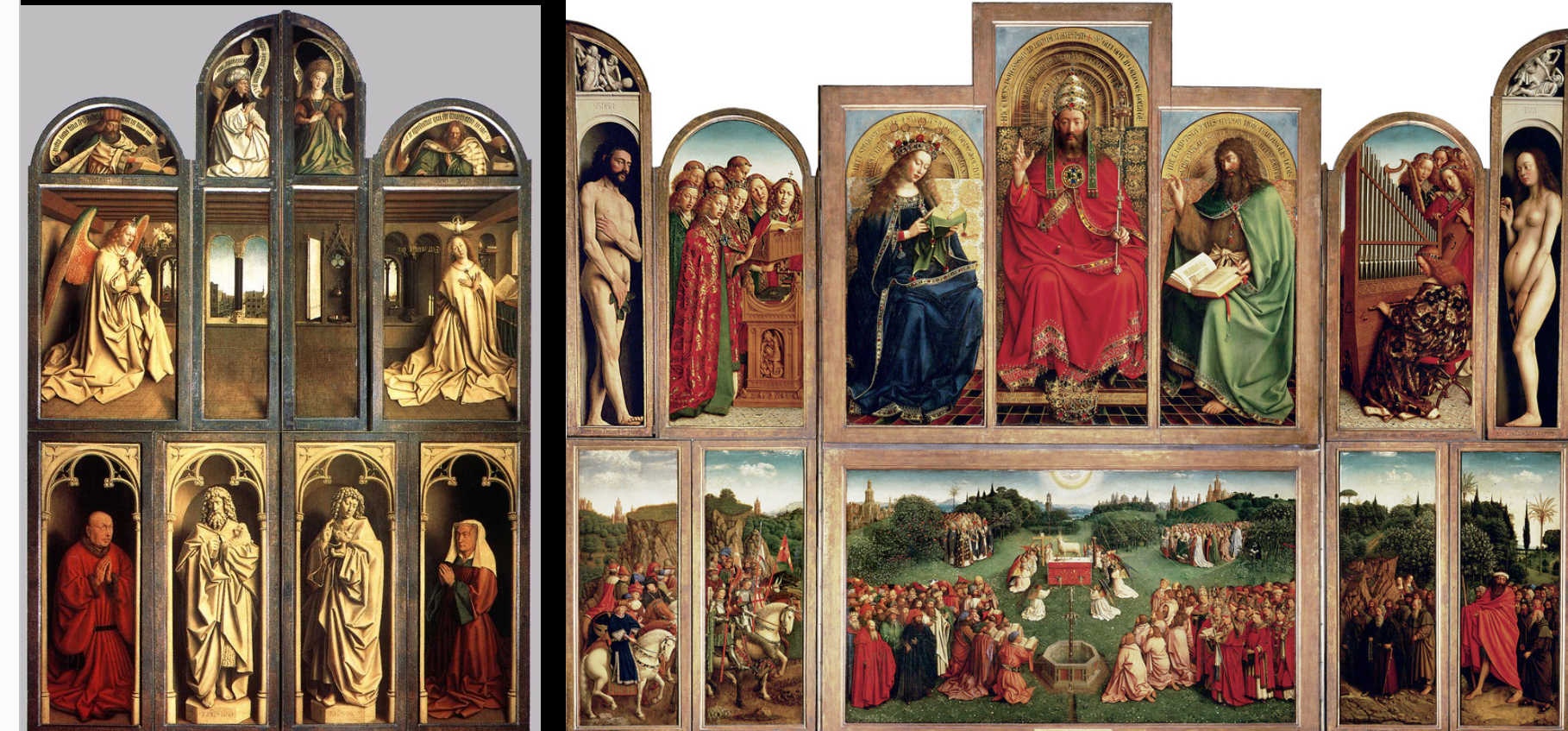
Hubert and Jan van Eyck, Ghent Altarpiece, close and open views (oil on wood), Ghent, Belgium, 15th century (Renaissance)
17ft by 12ft
Polytych
This is a folding altarpiece
The shadows that were cast matched the shadows of the room it was in
oil on wood
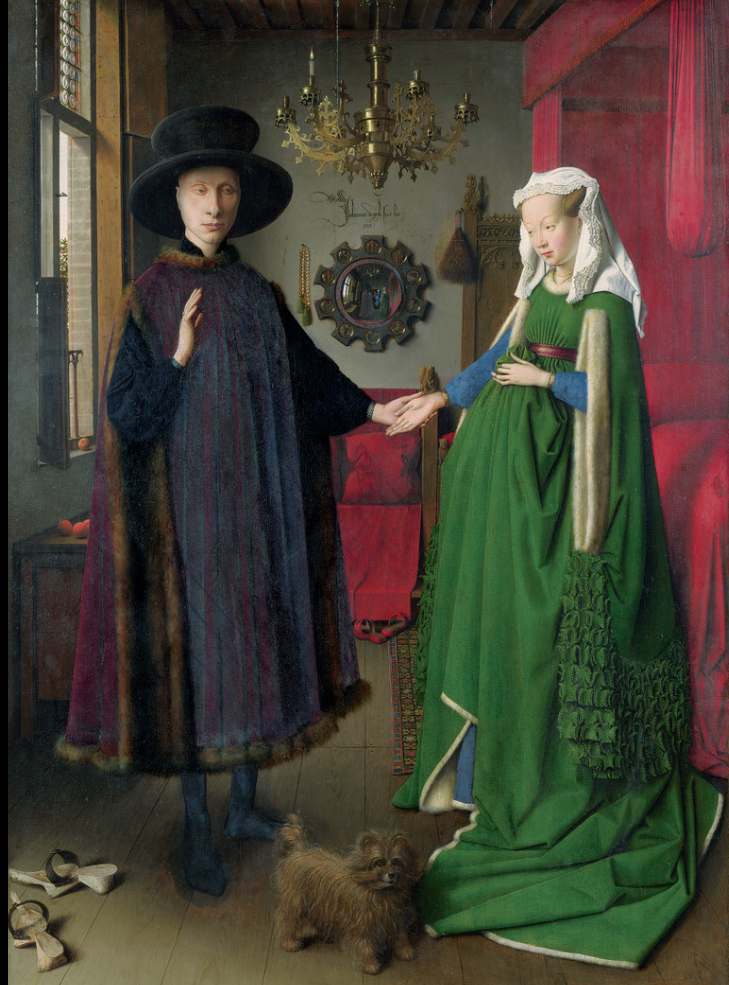
Jan van Eyck, The Arnolfini Double Portrait (oil on wood), Belgium, 15th century (Renaissance)
He is very individualized; she’s not. They are in a room with a bed in the background (very intimate space)
Trompe l’oeil was used to make you think you were looking at the actual scene/thing in the painting in front of you
The artisit used all the tools he had to make a portrait not only of these two people but also the space
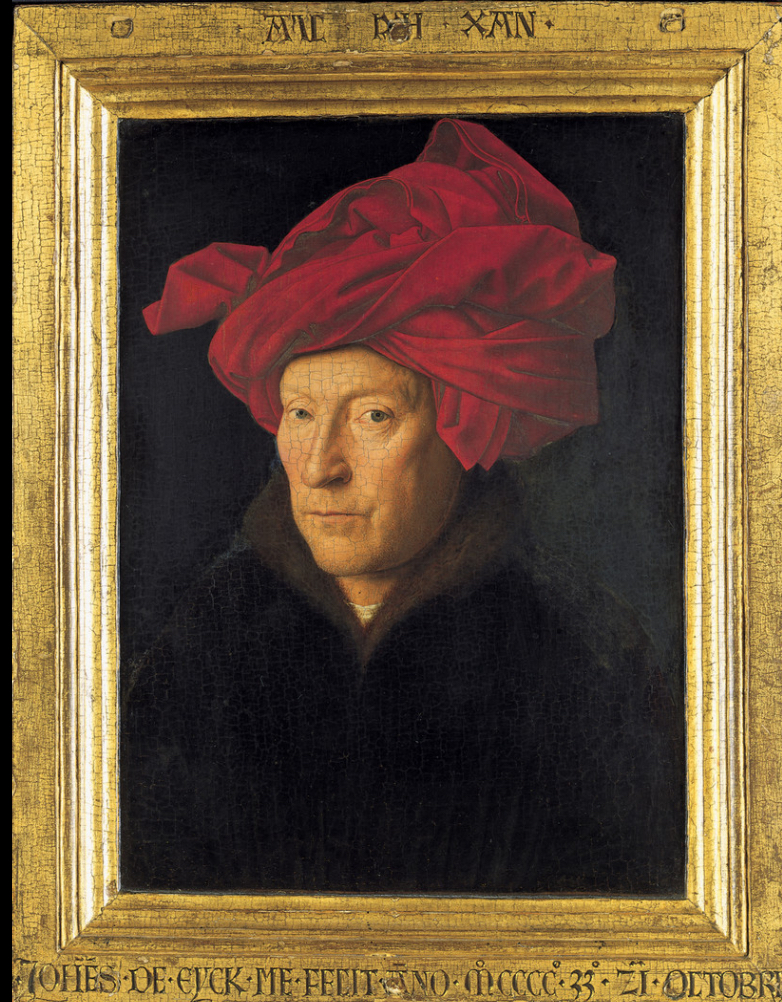
Jan van Eyck, Man in a Red Turban (oil on wood), Belgium, 15th century (Renaissance)
Northern Europe
Humanism
Leaning into the idea that the individual is important. So we see self-portraits
He is looking directly at you as the viewer
Still in original frame
Done on a panel of wood
Very much of a art of perception rather than conceptual art
He has stubble on his face
Oil glazes
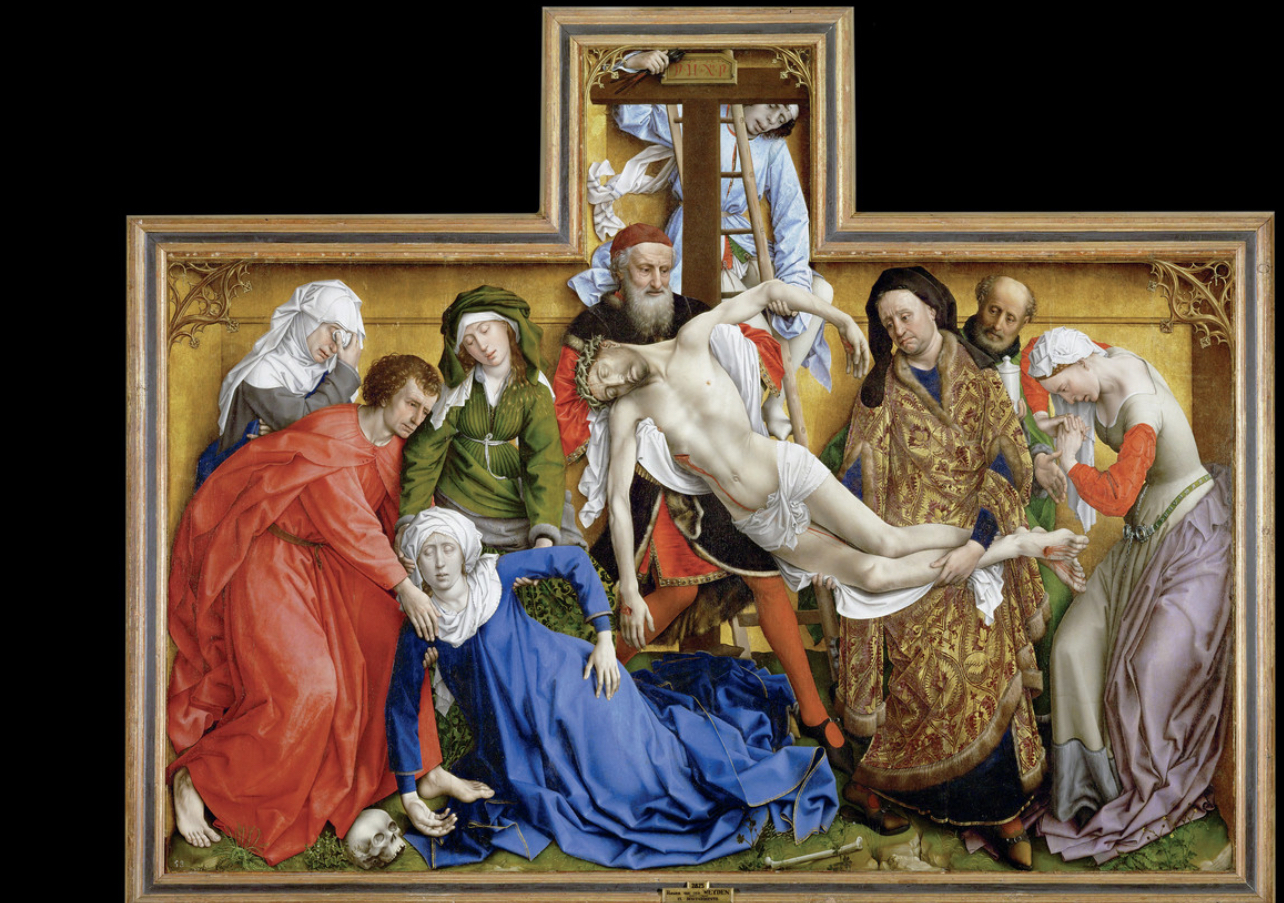
Rogier van der Weyden, Deposition, Belgium, 15th century (Renaissance)
oil on wood
8.5 wide
emotion. Because of the background, you’re forced to look at the people and nothing else
Body of Jesus is limp
Mary faints. She’s pail, in shock
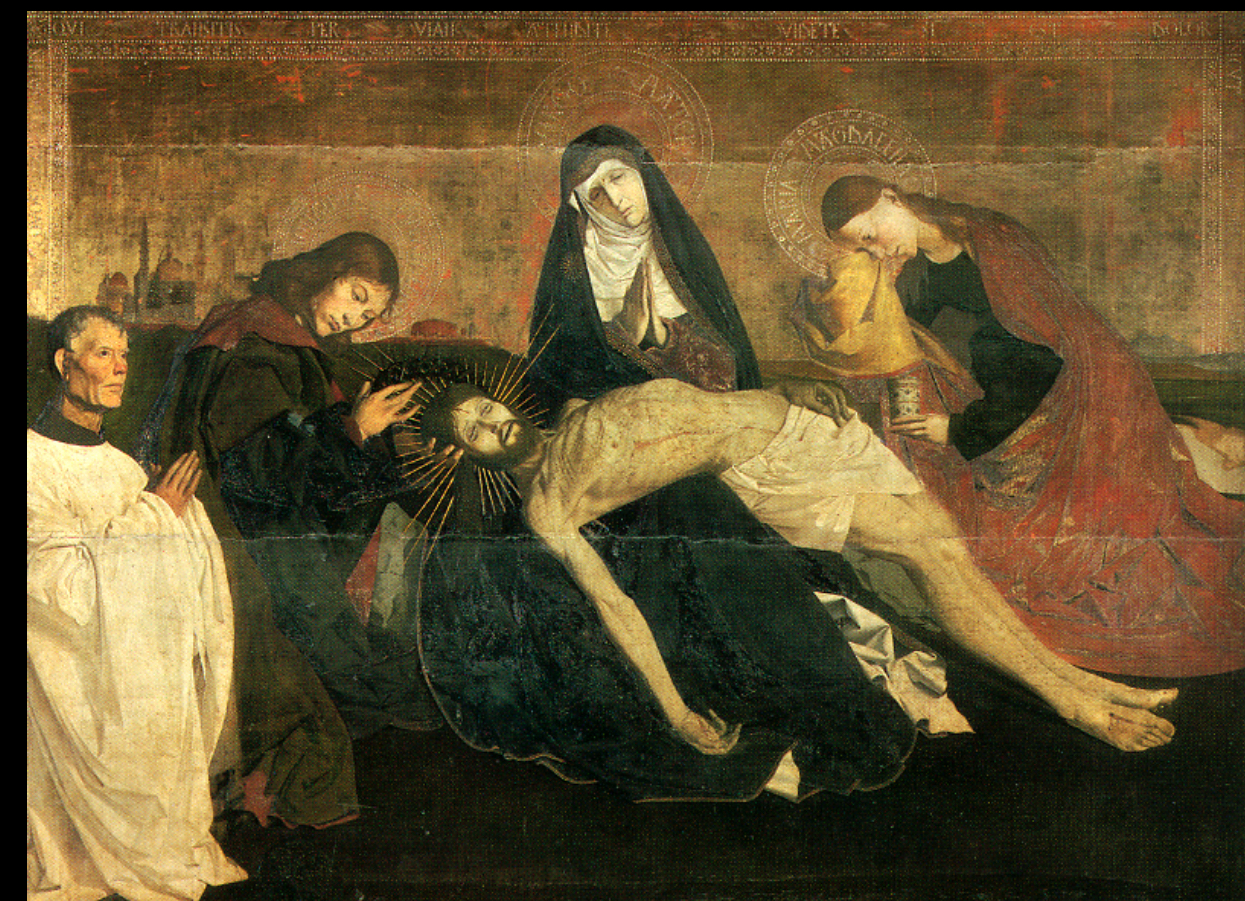
Enguerrand Quarton (?), Avignon Pietà, France, 15th century (Renaissance)
oil on wood
the artist is taking the piece out of time and space
as he’s pulling out the crown of thorns out of Jesus’s head a halo is coming out
The composition evokes strong emotion and spirituality, emphasizing the sorrow of the scene and the significance of Christ's sacrifice.

Buxheim Saint Christopher (woodcut), Germany, 1423 (Early Northern Renaissance)
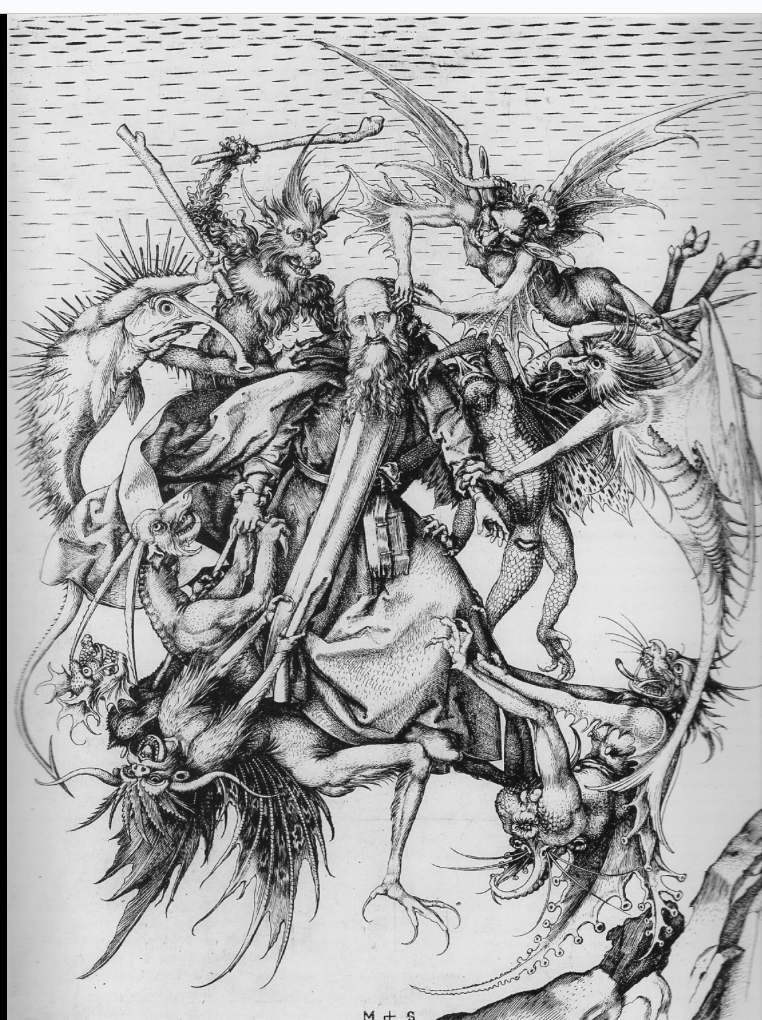
Martin Schongauer, Saint Anthony Tormented by Demons (engraving), Germany, 15th century (Renaissance)
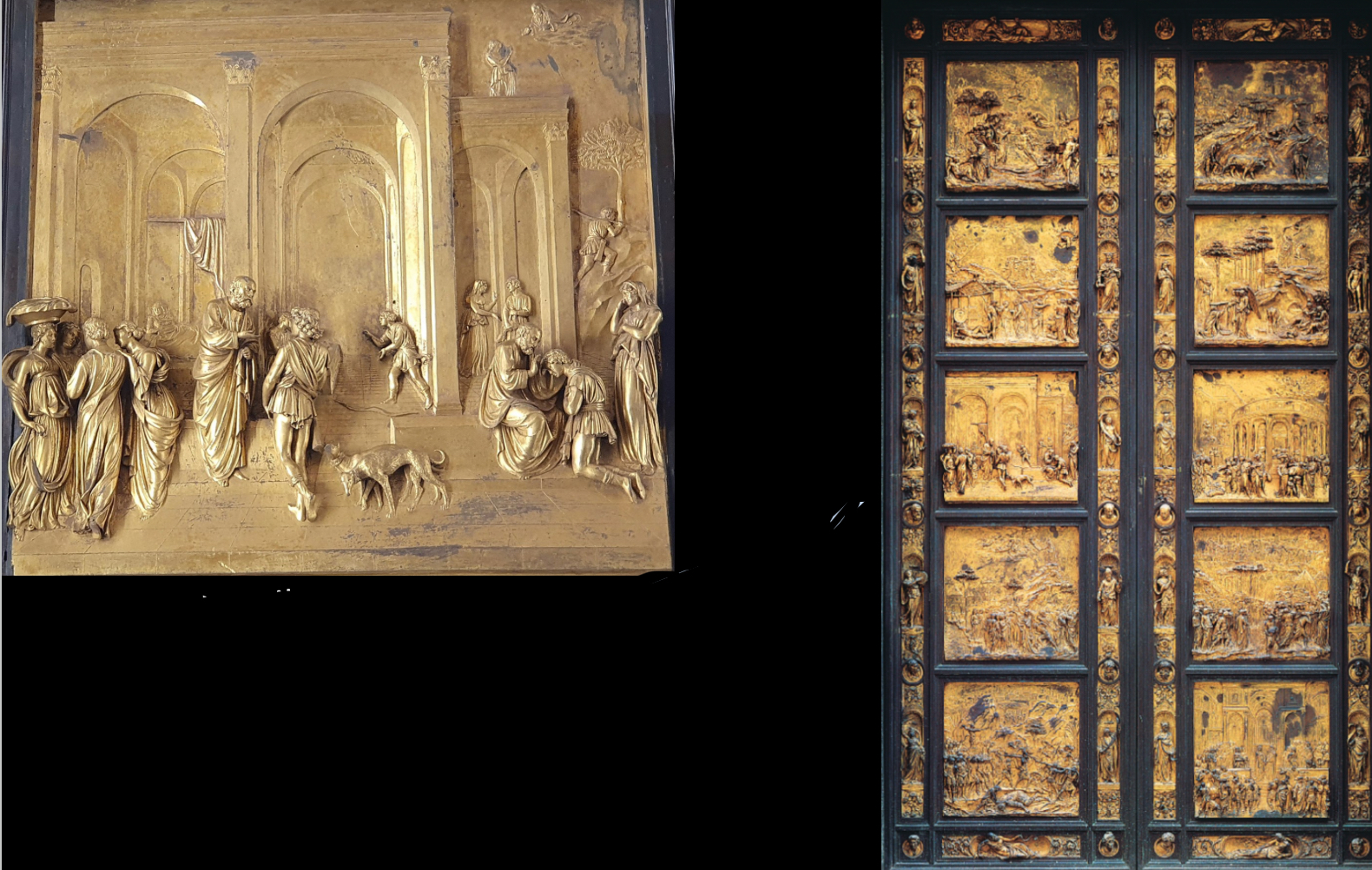
Lorenzo Ghiberti, Florence Baptistery, “Gates of Paradise”, 15th century (Renaissance) → Detail: Isaac and his sons, top left
Italian Renaissance artist
Illusion of space, uses linear perspective and atmospheric perspective. To make it seem that the art goes back
A prominent Italian Renaissance artist known for his works in sculpture and painting, especially noted for the design of the bronze doors of the Florence Baptistery.
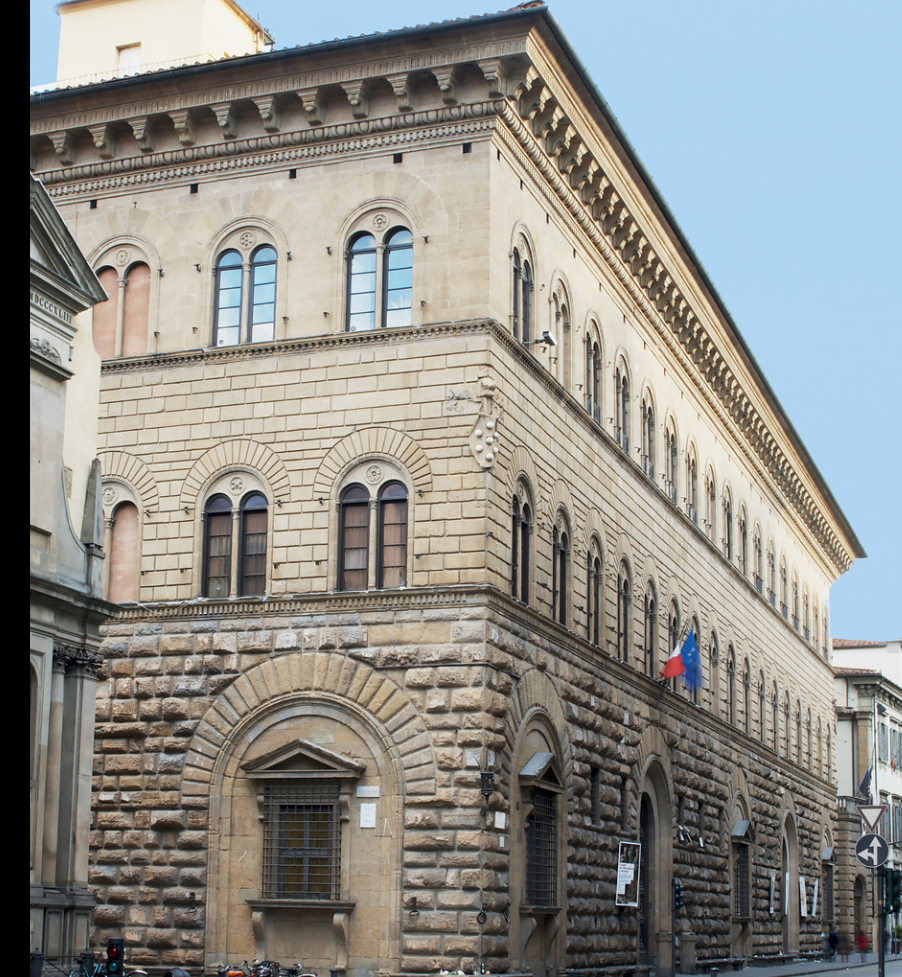
Michelozzo, Palazzo Medici, Florence, 15th century (Renaissance)
The outside has stone that’s cut and shaped to face. 3 different types of ashlar used
3 floors. Each floor as you go up, the stone gets smoother
Has statues
Open in the middle
Patron was shown and displayed in altarpieces
a significant example of Renaissance architecture that showcases the transition from medieval fortification to the elegance of humanist ideals.
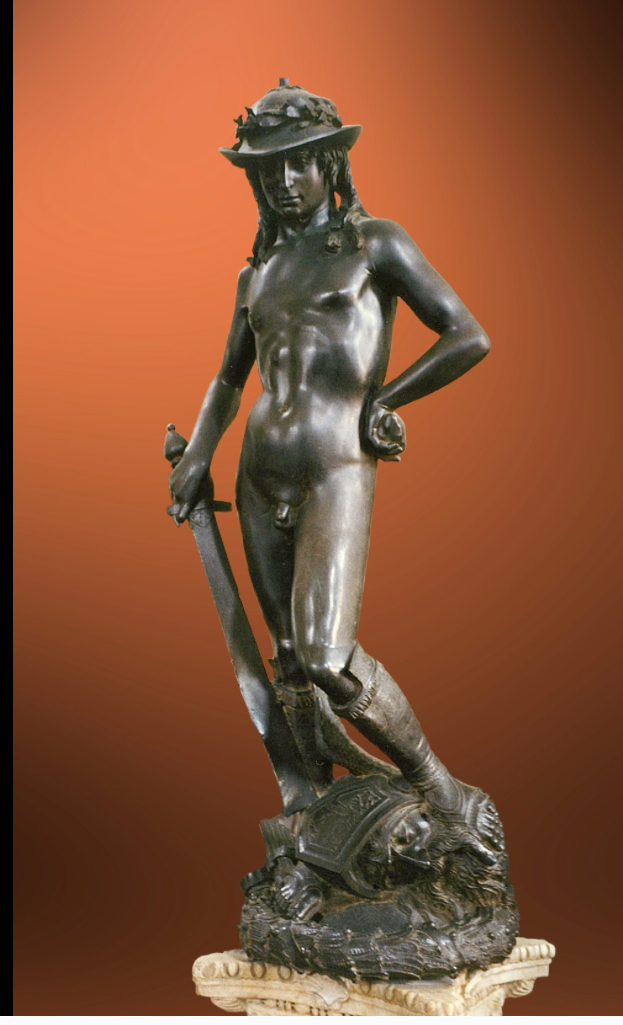
Donatello, David (bronze), Florence, Italy, 15th century (Renaissance). Commissioned by the Medici family.
was in the Palazzo Medici-Riccardi courtyard at some point
David was a symbol for the might of Florence. The ppl set themselves as the unexpected victors/the underdogs
using bronze also relates back to how they used it in ancient times
Donatello's David is notable for its early representation of the male nude in sculpture, embodying both classical ideals and the themes of strength and youth, reflecting the Renaissance's focus on humanism and individualism.
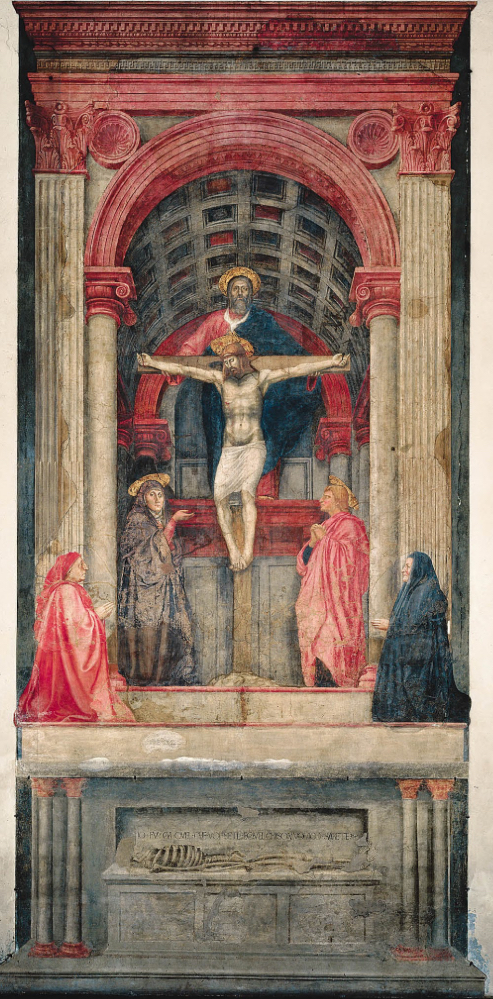
Masaccio, Holy Trinity (fresco), Santa Maria Novella, Florence, Italy, 15th century (Renaissance). Patrons: Lorenzo Lenzi and wife.
Inscription: What you are, I once was; what I am, you will be.
is a reminder that life is short and we should do good with the life we have
Artist used linear perspective to create a 3D image on a 2D surface.
Linear perspective
Orthogonal lines
the vanishing point is at eye level
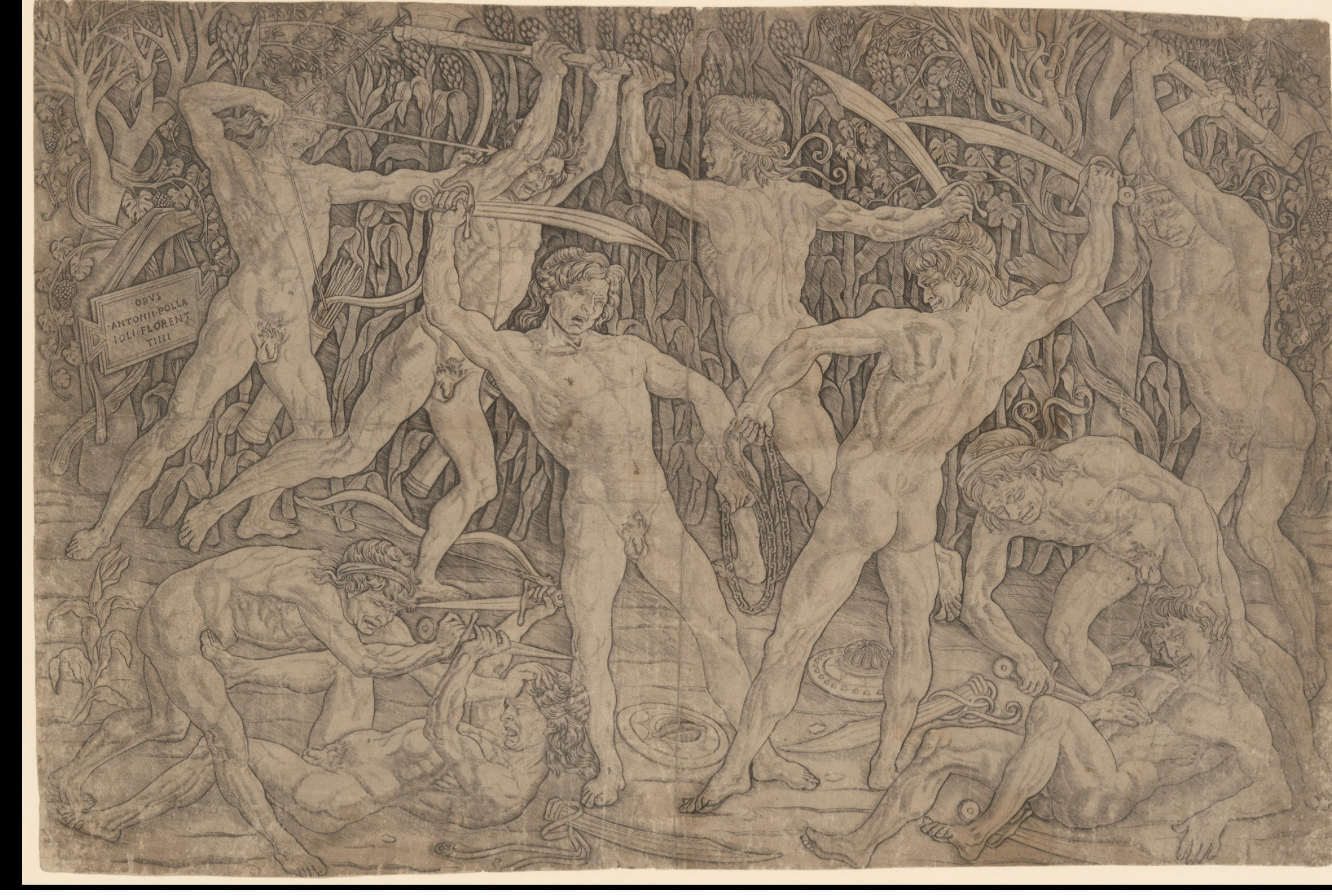
Antonio del Pollaiuolo, Battle of Ten Nudes (engraving), Florence, Italy, 15th century (Renaissance)
artist exploring the nude
he’s done his best to show every muscle tense in the battle. So the piece is less fluid
The men show a lot of emotion. All the facial gestures are grimaicing
EMOTION IS THE MESSAGE from this period

Sandro Botticelli, Birth of Venus (tempera on canvas), Florence, Italy, 15th century (Renaissance). Commissioned by the Medici family.
9 ft wide
creates the earliest monumental full-length nude of a goddess since Antiquity, that does not represent EVE
painting was made on canvas, using tempera paint (not oil). He used the paint to give this sort of weightless impression.
the ppl seem weightless. not meant to be logical. just full of movement
the stance here was similar to the late Greek Era with the contrapposto stance
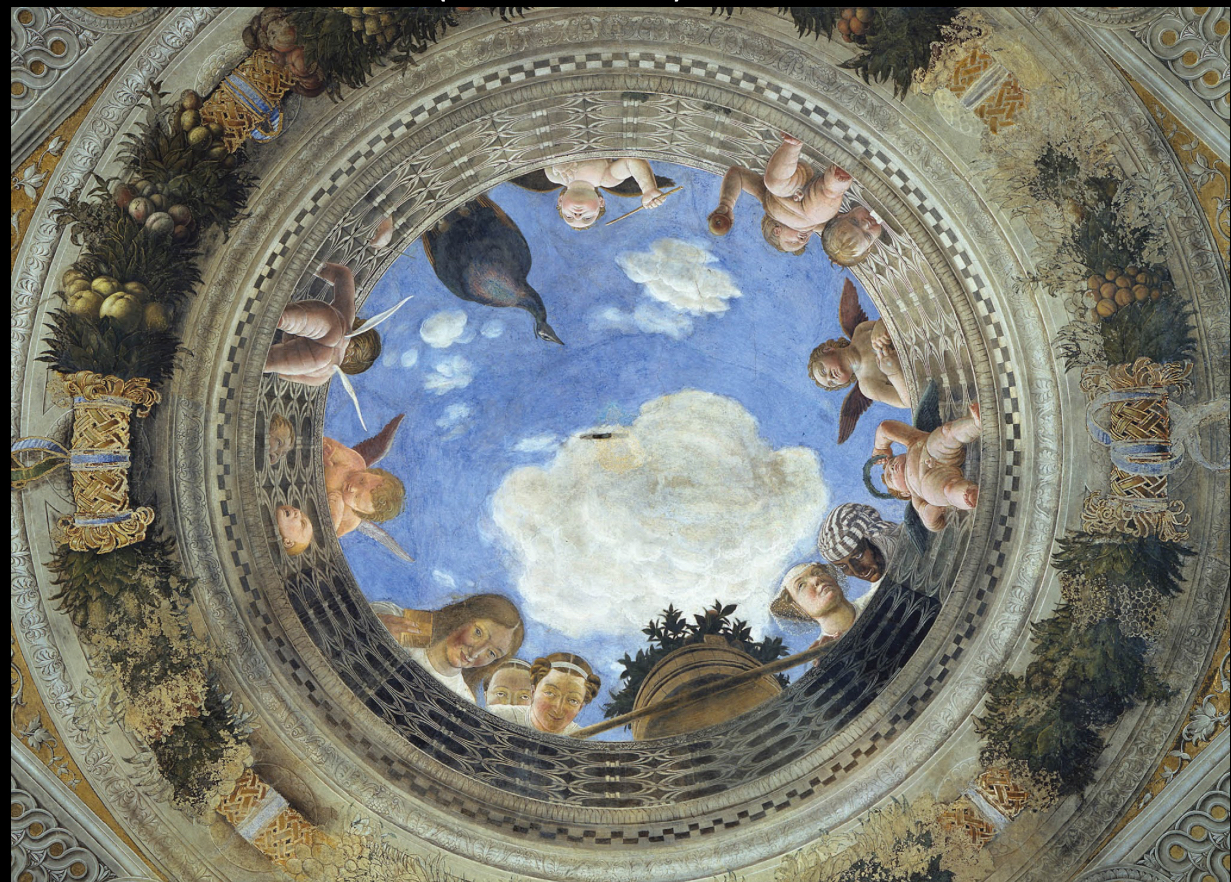
Andrea Mantegna, Camera Picta (fresco), Palazzo Ducale, Mantuna, Italy, 15th century (Renaissance)
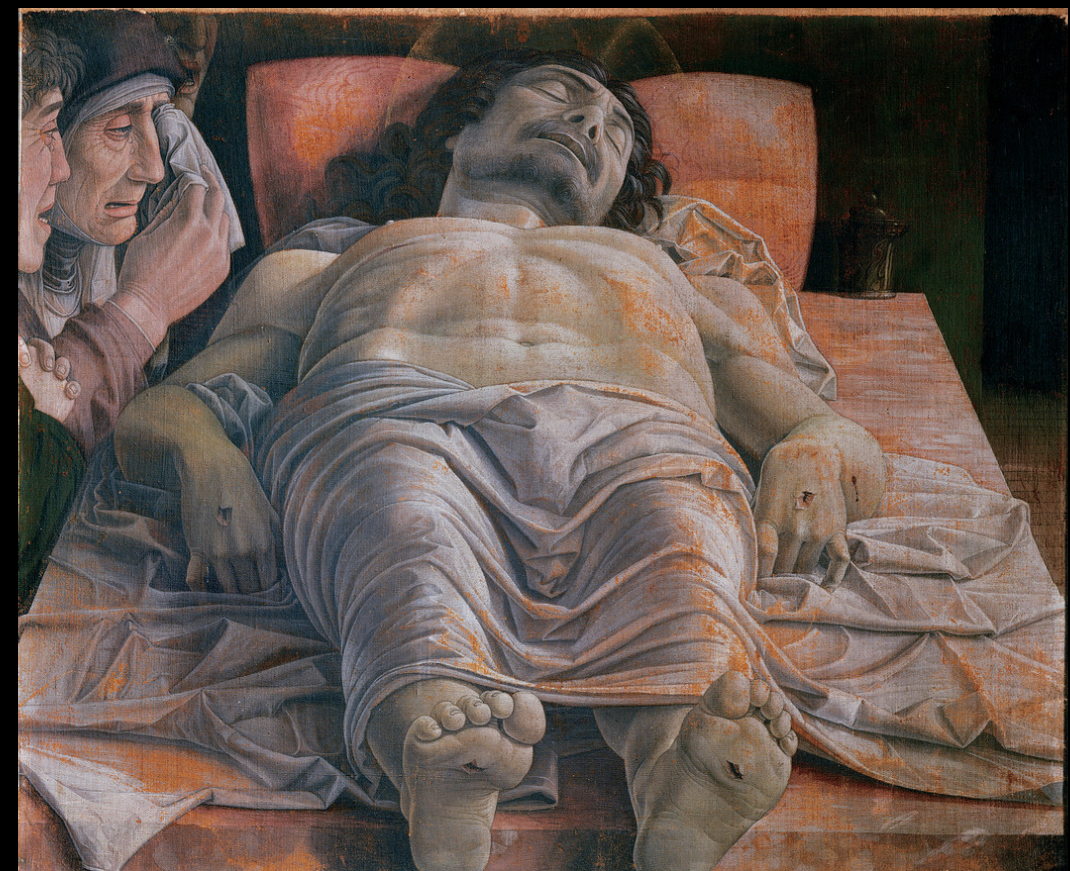
Andrea Mantegna, Foreshortened Christ, Italy, 15th century (Renaissance) Tempera on wood
tempera on wood
uses the foreshortening to emphasize the nail holes in his hands and feet. The wounds are bleeding so it’s a reminder that the figure isn’t living
reflect the emphasize of the reincarnation of Christ

Petrus Christus, Portrait of a Carthusian Monk, Belgium, 15th century (Renaissance)
Who famously figure out the oil glazes technique
Jan van Eyck during Renaissance period
Van Eyck Ghent Altarpiece vs. Masaccio Holy Trinity
Eyck was interested in humanism and surface details. It was also oil on wood
Masaccio was interested in the overall interest of space. And it was fresco piece
Eyck's work showcased meticulous detail and realism through oil paint, while Masaccio's fresco emphasized perspective and spatial composition.
Compare Donatellos David (bronze) to his David (marble)
Donatello's bronze David is smaller, more expressive, and dynamic, showcasing a youthful and graceful stance. In contrast, the marble David is larger, more heroic in posture, representing strength and idealized beauty.
Emotion is the message from what period in time
Renaissance
Compare and Contrast: Jan van Eyck, The Arnolfini Double Portrait with Sandro Botticelli, Birth of Venus
Both artworks reflect humanist ideals and advanced techniques; van Eyck's portrays intimate domesticity and realism through oil, while Botticelli's emphasizes mythological themes and linear elegance in tempera.
Arnolfini
oil
indoors
muted, rich tone color palette
The man was closer to the window, so he’s closer to the world. While the omen is on the bedside = domestic. The piece shows gender ideals
Northern reneissance artisits loved to show illusion and scale and details
during this time period the there was a public bedroom and a private bedroom
Birth of Venus
tempura
outside/nature
lighter color palette
Chirascuro- this area of the Renaissance is more faded
while Venus is naked, the hand maiden is waiting for her on land and has clothes to cover her. Because women were supposed to be covered up